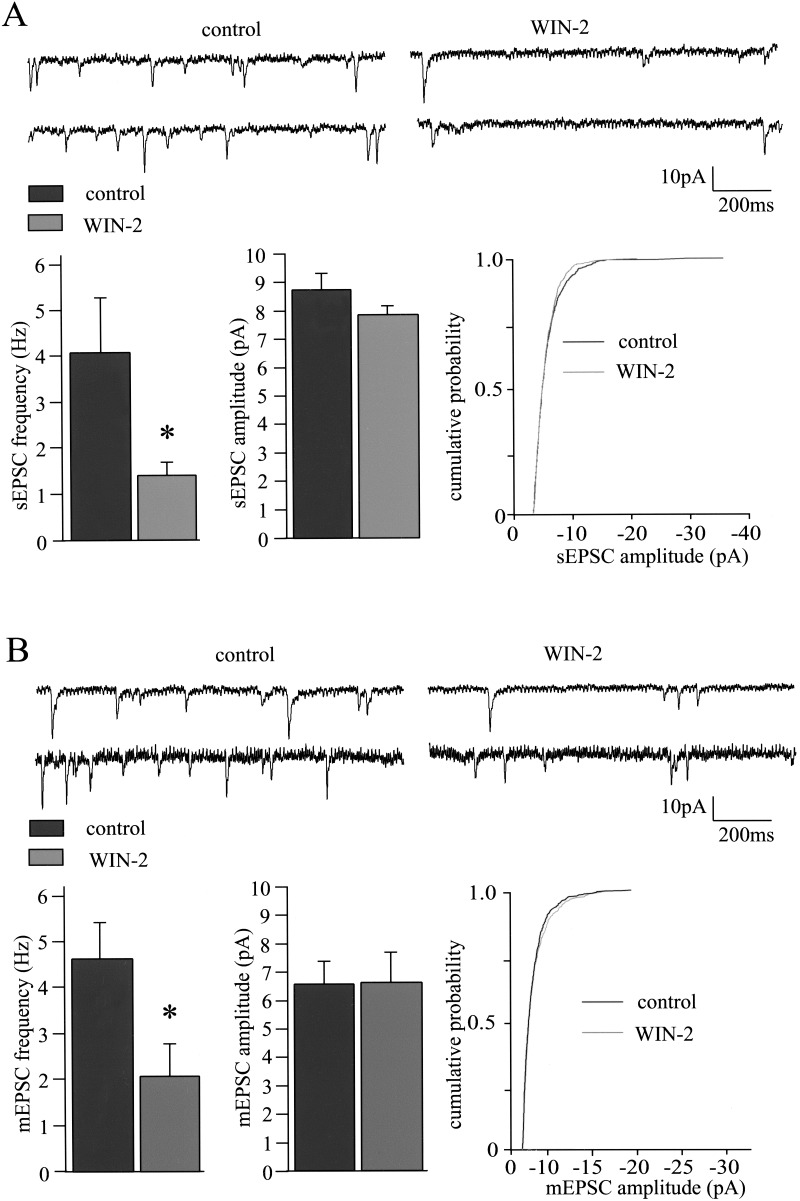Figure 4.
Cannabinoids reduce synaptic transmission through presynaptic mechanisms. (A) The CB1 agonist WIN-2 (5 μM) reduces the frequency of sEPSCs from 4.1 ± 1.1 Hz to 1.4 ± 0.3 Hz (n = 12; P < 0.05). A representative pair of traces and the bar diagram (n = 12) are shown. The amplitudes of the sEPSCs are unaffected by WIN-2, as seen in the bars (control, 8.5 ± 0.12 pA; WIN-2, 8.2 ± 0.04 pA; n = 12; P > 0.05) and one representative example of the cumulative probability of sEPSC amplitudes. (B) Application of WIN-2 (5 μM) also reduces the frequency of mEPSCs recorded in the presence of 1 μM TTX (control, 4.5 ± 0.9 Hz; WIN-2, 2 ± 0.7 Hz; n = 6; P < 0.05). A representative pair of traces and the bar diagram are shown. WIN-2 (5 μM) does not alter mean mEPSC amplitude as seen in the bars (control, 6.6 ± 0.8 pA; WIN-2, 6.6 ± 1.1 pA; n = 6; P > 0.05) and one representative example of the cumulative probability of mEPSC amplitudes.

